INDIAN ARMED FORCES CHIEFS ON OUR RELENTLESS AND FOCUSED PUBLISHING EFFORTS

The insightful articles, inspiring narrations and analytical perspectives presented by the Editorial Team, establish an alluring connect with the reader. My compliments and best wishes to SP Guide Publications.

"Over the past 60 years, the growth of SP Guide Publications has mirrored the rising stature of Indian Navy. Its well-researched and informative magazines on Defence and Aerospace sector have served to shape an educated opinion of our military personnel, policy makers and the public alike. I wish SP's Publication team continued success, fair winds and following seas in all future endeavour!"

Since, its inception in 1964, SP Guide Publications has consistently demonstrated commitment to high-quality journalism in the aerospace and defence sectors, earning a well-deserved reputation as Asia's largest media house in this domain. I wish SP Guide Publications continued success in its pursuit of excellence.
Boosting Army's Air Defence Capability
Defence Minister Rajnath Singh has lauded the joint efforts of multiple agencies in developing, what he termed, one of the best state-of-the-art missile systems in the world that will prove to be a game changer in the air defence capabilities of Indian armed forces
 |
The Author is Former Director General of Information Systems and A Special Forces Veteran, Indian Army |
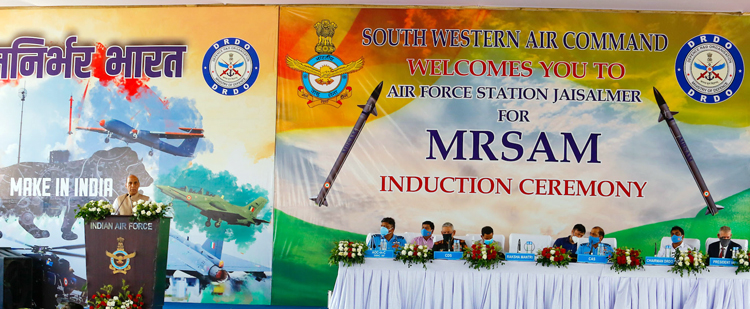
The Army has embarked on enhancing its air defence capabilities across the board from the lowest to the highest levels. Media reports of October 18, 2021 indicate that the Army has contracted a small number of IGLA Man-portable AD System (MANPADS) from Russia under the emergency procurement powers of the Vice Chief of Army Staff. The deliveries for these are expected in an early time frame. IGLA MANPADS was developed by the Soviet Union in the 1970s – then termed 9K38 IGLA (Needle). The Army is already equipped with IGLA MANPADS but these are not as advanced as the IGLA-S MANPADS being procured. IGLA MANPADS fall in the category of Very Short Range Air Defence (VSHORAD) Systems.
The IGLA MANPAD can engage aircraft, helicopters and Unmanned Aerial Vehicles (UAVs) using high explosive blast fragmentation. Compared to the Strela, the IGLA has increased warhead weight. Its infrared (IR) guidance system uses proportional convergence logic for target acquisition and movement prediction. The 9M39 missile constitutes a seeker head, control system and propulsion system. The IGLA also uses 9S520 night fire equipment package. The IGLA launcher tube houses the SAM, which can also mount ground power supply sources and coolant gas.
The IGLA MANPAD can engage aircraft, helicopters and Unmanned Aerial Vehicles (UAVs) using high explosive blast fragmentation
During DefExpo 2020, a representative of Russia's Federal Service for Military-Technical Cooperation (FSMTC) had told media that contract negotiations were underway for the supply of IGLA-S MANPADS as well as their licensed production in India, hoping that the contract would be signed by end 2020. Simultaneously, a media report stated that India was planning to buy 5,175 missiles and launchers of the IGLA-S in multiple variants from Russia and DRDO will also assemble another some 600 of these missiles in India. The report further said that a contract worth up to $1.5 billion would include both the supply of ready-made IGLA-S and the assembly of components in India.
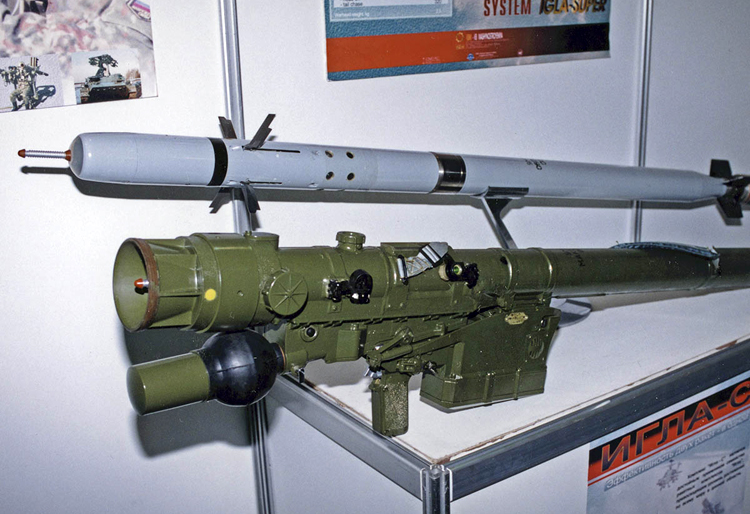
Characteristics of the IGLA-S MAPADS include:
- length -1.574 metres (5.16 feet);
- engine - solid fuel rocket motor;
- guidance system - dual waveband infra-red (S-version);
- flight ceiling - 3.5 km (11,000 feet);
- warhead - 1.17 kg (2.6 lb) with 390 g (14 oz) explosive;
- diameter - 72 mm, and;
- detonation mechanism - contact and grazing fuse.
Induction of IGALA-S will give a fillip to air defence capabilities of the Army.
The Army has recently deployed upgraded L-70 anti-aircraft guns along the Line of Actual Control (LAC) to meet the enhanced unarmed aerial vehicle (UAV) and unarmed combat aerial vehicle (UCAV) threat from China. Originally manufactured by Swedish firm Bofors AB in the 1950s, the L-70 guns were modified by Bharat Electronics Limited (BEL) following the standoff with China in Eastern Ladakh since last year.
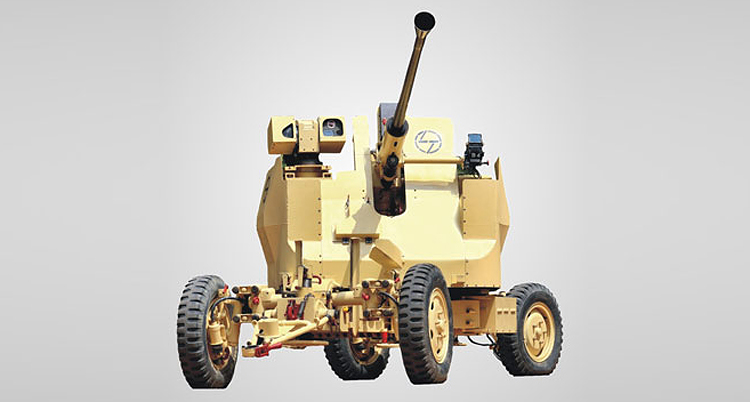
In September 2021, the Army demonstrated capabilities of the modified L-70 gun when it successfully intercepted a 0.6-meter wide commercially purchased drone. However, further system refinements were considered necessary and undertaken. The modified gun system has been equipped with new electrical servo drives, high-resolution electro-optical sensors, thermal imaging and daylight television cameras and a laser-range finder.
The modified L-70 features enhanced target acquisition and automatic target tracking capabilities, allowing it to bring down unmanned aerial vehicles in all weather conditions
Equipping the L-70 with muzzle velocity radar has enhanced its accuracy. The gun can also be integrated with tactical and fire control radars for added flexibility. Media has quoted an Army AD (AAD) officer saying, “The limitations associated with the upgraded guns have been overcome by incorporation of state-of-the-art components, latest technology, making it a potent weapon system against all low-level air threats.” Notably, the modified L-70 features enhanced target acquisition and automatic target tracking capabilities, allowing it to bring down unmanned aerial vehicles in all weather conditions.
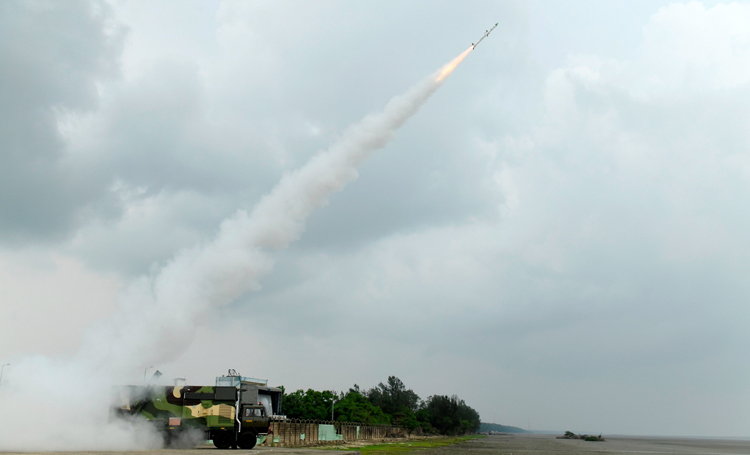
The Army presently has two regiments of ‘Akash’ medium-range mobile surface-to-air missile (SAM) in service. Each Akash battery consists of four self-propelled Launchers (3 x Akash SAMs each), a Battery Level Radar – the ‘Rajendra’, and a Command Post (Battery Control Centre). Each battery can track up to 64 targets and attack up to 12 of them. The missile has a 60 kg high-explosive, pre-fragmented warhead with a proximity fuse. The Akash missile system can target aircraft up to 50–80 km away, at altitudes up to 18,000 m. It has the capability to neutralise aerial targets like fighter jets, cruise missiles and air-to-surface missiles as well as ballistic missiles.
Both the Army and IAF are presently equipped with the Akash SAMs. With a range of 25 km, the Akash SAM system has been tested for both air defence and missile defence roles.
The DRDO was initially tasked to develop the Akash system to provide mobile air defence cover for Army’s mechanised formations on the move – to replace the vintage Russian Kvadrat OSA-AK missile system. However, when the Army conducted trials of the system it found that mobility of Akash could not match that of mechanised forces, it could not negotiate even small undulations in the ground and had difficulty in targeting even slow moving helicopter targets on the move. Hence the ‘Akash’ was then given to the Indian Air Force (IAF) to beef up other air defence systems deployed for area defence.
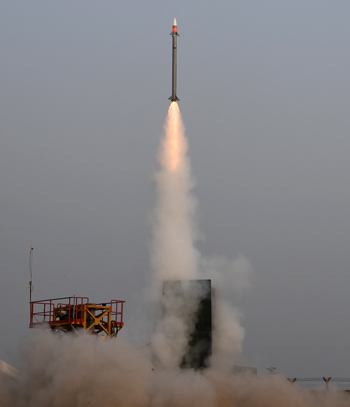
Subsequently, the Army was provisioned with two regiments of Akash after improvements made in mobility. Both the Army and IAF are presently equipped with the Akash SAMs. The Army is now negotiating for two more regiments of Akash SAMs. According to media, quoting an unnamed official, the contract is likely to be signed by January 2023. With a range of 25 km, the Akash SAM system has been tested for both air defence and missile defence roles. The system provides air defence missile coverage for an area of 2,000 sq km.
On September 9, 2021, the first deliverable Firing Unit (FU) of Medium Range Surface to Air Missile (MRSAM) System was handed over to IAF in presence of Defence Minister Rajnath Singh at Air Force Station, Jaisalmer in Rajasthan. This gives a significant boost to our air defence capabilities. The MRSAM (IAF) is an advanced network centric combat Air Defence System developed jointly by the DRDO and the Israel Aerospace Industries (IAI) in collaboration with the Indian private and public sector companies including MSMEs. During the event, DRDO and IAI officials demonstrated the capabilities of MRSAM system, as part of On-Site Acceptance Test (OSAT).
The indigenously developed MRSAM system, capable of high maneuverability in engaging multiple targets at ranges up to 70 km, provides air defence against aerial threats like fighter aircraft, UAVs, guided and unguided munitions and cruise missiles
Defence Minister Rajnath Singh lauded the joint efforts of multiple agencies in developing, what he termed, one of the best state-of-the-art missile systems in the world, adding, “With the handing over of MRSAM system to IAF, we have taken a giant leap towards achieving ‘Atmanirbhar Bharat’ as envisioned by our Prime Minister Narendra Modi. It will prove to be a game changer in the air-defence system.”
The indigenously developed MRSAM system, capable of high maneuverability in engaging multiple targets at ranges up to 70 km, provides air defence against aerial threats like fighter aircraft, UAVs, guided and unguided munitions and cruise missiles. After the IAF, the Army too is looking forward to acquire the missile system.





